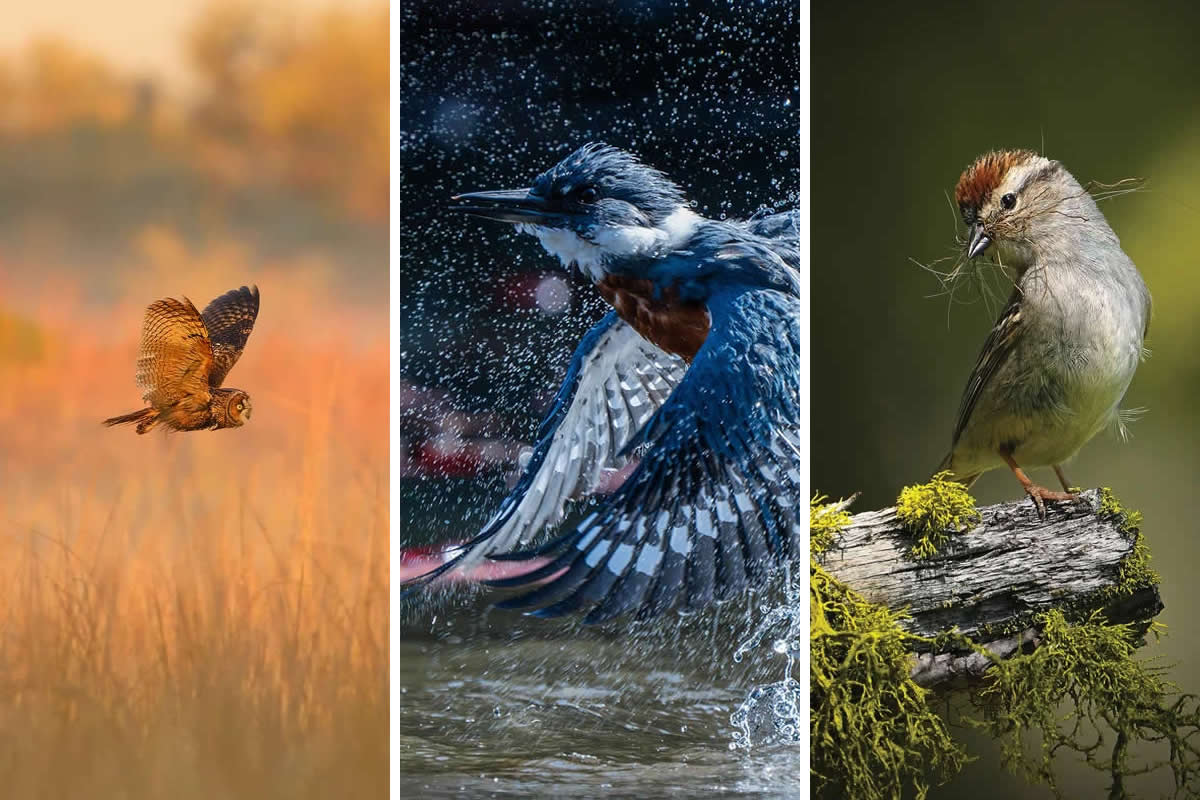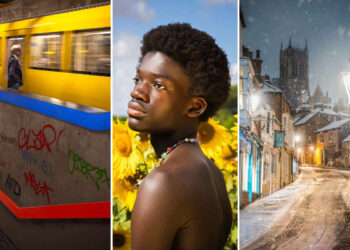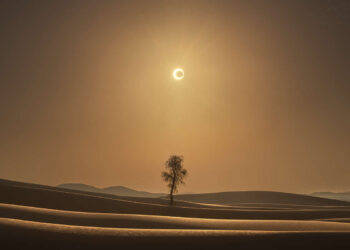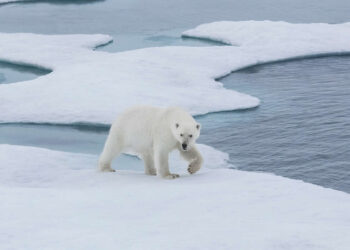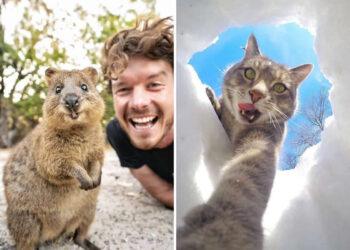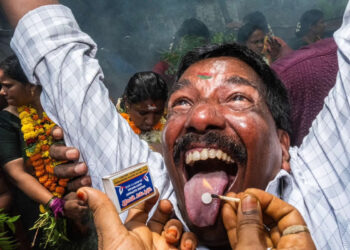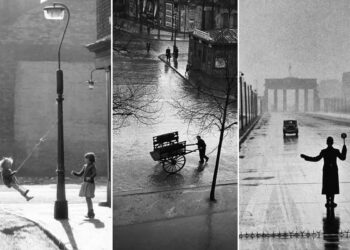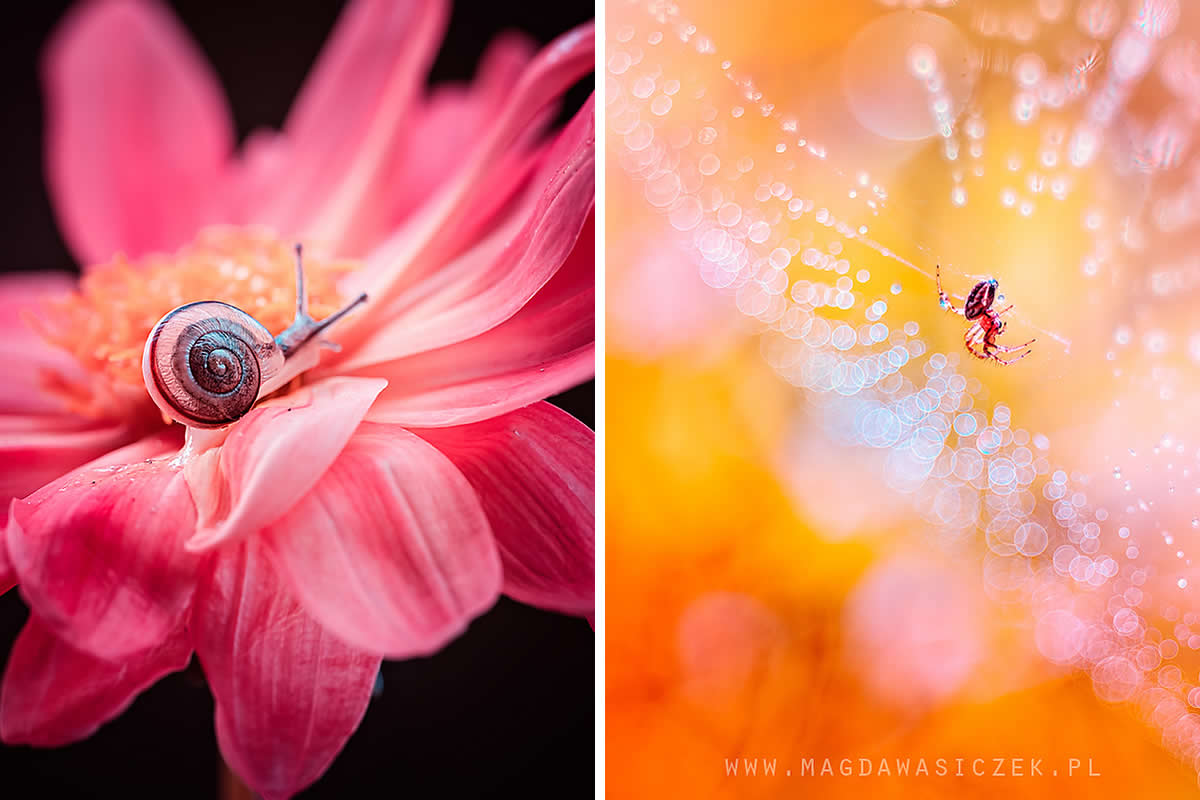Hold up—did you see the winning shots from the 2025 Audubon Bird Photography Awards? If not, you’re about to have your mind absolutely blown. Every year, this contest is the GOAT for showcasing the planet’s most jaw-dropping avian photography, but 2025? They went full throttle. This year’s competition was a major game-changer because Audubon expanded its reach, bringing in killer talent from Chile and Colombia, which are seriously biodiversity hotspots.
That means the photo submissions didn’t just cover North America; they spanned the entire Western Hemisphere, adding a whole new layer of stunning, diverse bird life to the gallery. We’re talking about an epic mix of Grand Prize winners, Youth phenoms, and champions across new categories like Plants for Birds and Birds Without Borders.
These aren’t just snapshots; they’re masterpieces that tell a story—often a wild, dramatic one. You’ve got photographers who waited for years to capture a single, perfect moment, like the Grand Prize winner who snagged a magnificent frigatebird silhouetted perfectly against a solar eclipse. Talk about dedication! Then there are the shots that nail the environmental message, showing how birds are thriving (or struggling) right next to our urban sprawl.
From a tiny, iridescent hummingbird feeding on a native flower in Colombia to a colossal flock of northern gannets covering a rocky cliff face in Canada, the images prove that birding isn’t just a hobby—it’s an extreme sport and a powerful act of conservation. The whole collection is a massive, humbling reminder that we share this rock with some truly spectacular creatures. Get ready to scroll through the 15 most remarkable winning photos that are setting the standard for wildlife photography this year. Let’s dive into the artistry, the drama, and the sheer talent that went into these unforgettable shots.
You can find more info:
#1. Grand Prize: "Ringed Kingfisher" by Felipe Esteban Toledo Alarcón
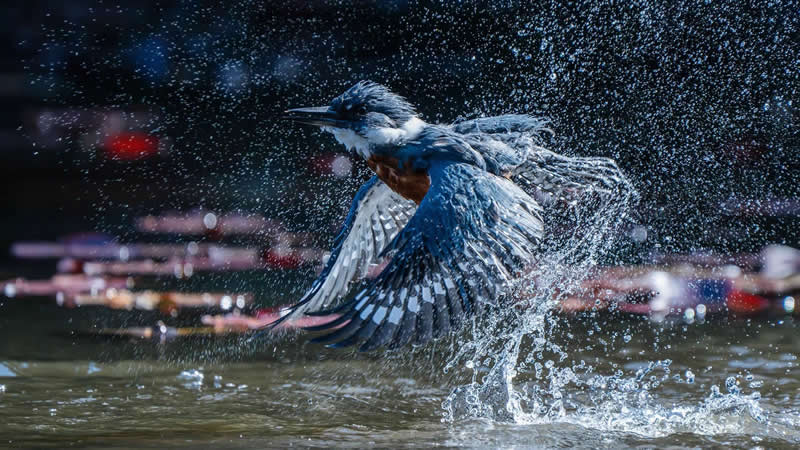
"While looking to photograph frogs’ mating rituals at a lagoon in Parque Saval, my friend and I noticed a pair of Ringed Kingfishers hunting fish, completely submerging themselves in the water. No one can ignore such a scene. While the female was far away, the male dove unsuccessfully time and time again—and with each try, he moved closer to us. Even though the sun was not in the perfect position, I set up my camera in burst mode with a high shutter speed, moderate ISO, and “zone” focus. I was ready. After the bird made six dives, I got the image that I’d been chasing: a kingfisher explosively rising out of the water, displaying its beauty, elegance, and power. "
#2. Grand Prize: "Magnificent Frigatebirds" by Liron Gertsman
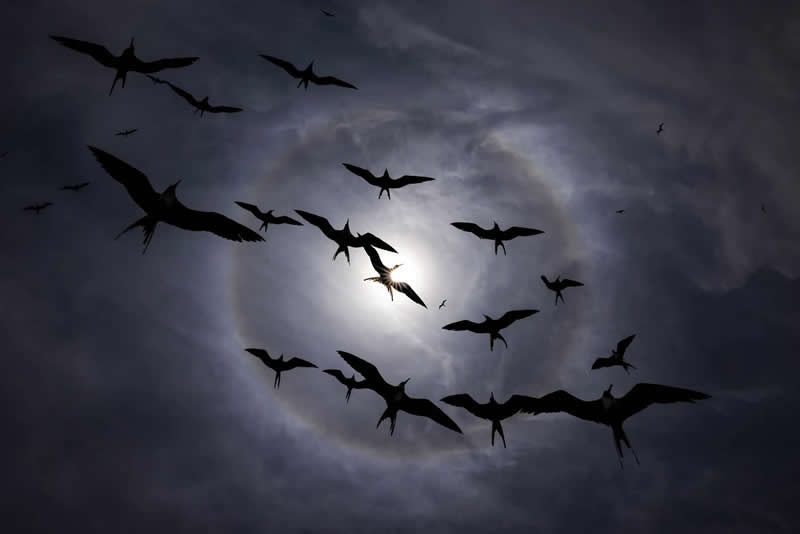
"Frigatebirds are a common sight in many coastal towns in Mexico. As a kleptoparasitic species, they may look to steal a meal from other seabirds—or from local fishermen. I photographed these birds as they passed a stunning halo in the sky. These rings of light form when millions of tiny ice crystals in the atmosphere refract sunlight, often when there are high-altitude cirrus or cirrostratus clouds. I utilized a small aperture to ensure both the birds and sky would be sharp and to get a “starburst” effect on the sun in the middle of the frame."
#3. Birds in Landscapes: "Northern Gannet" by Joe Subolefsky
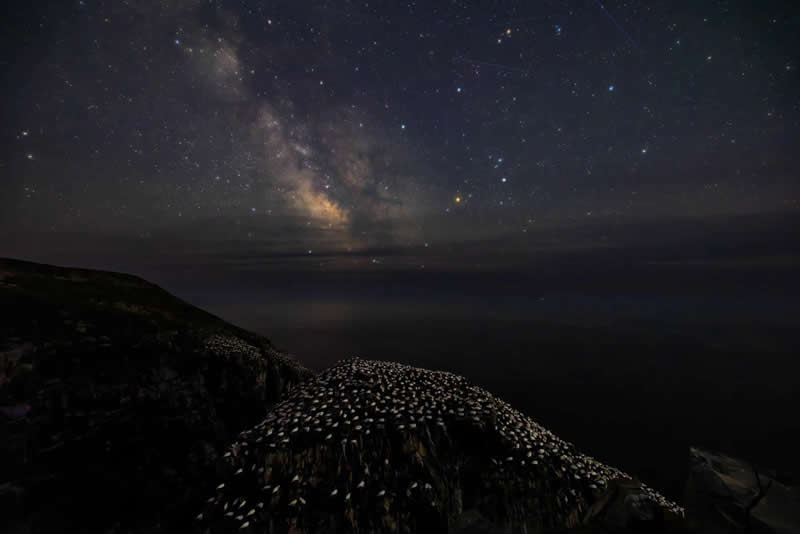
"I wanted to photograph Northern Gannets against the Milky Way, so I studied the moon phases and planned a trip. Forecasters predicted rain and fog for all three nights I was in Newfoundland, so my chances were limited. I hiked to the colony and waited for clear skies. I used only the rotating light from the nearby lighthouse, which washed over the colony every 30 seconds. Then, for a mere 20 minutes, most of the clouds parted, bringing the stars and Milky Way to life. "
#4. Birds in Landscapes, Colombia: "Blue-headed Parrots" by Shamir Shah
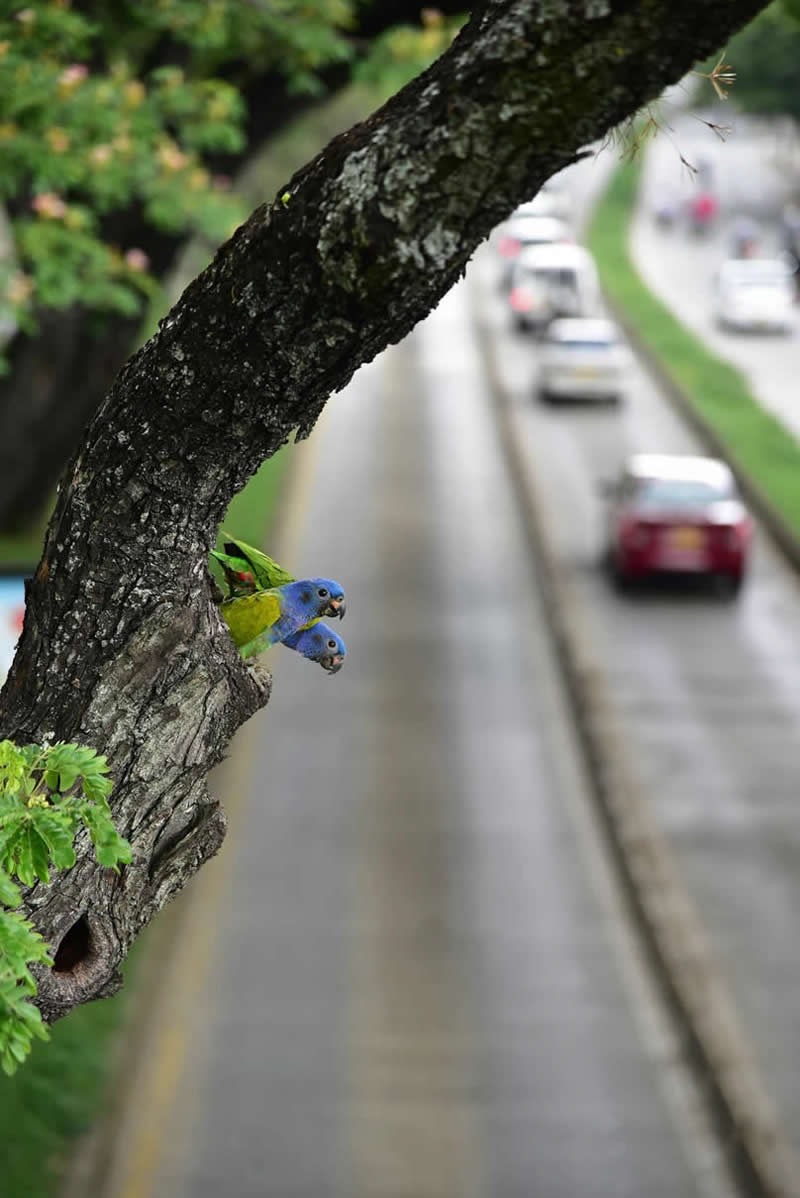
"On this day, I was documenting trees above a bike path along a busy road and climbed a pedestrian bridge to get a different angle. That’s when I saw these Blue-headed Parrots peeking out from a hollow. This image tells an interesting story: Down below, people in cars and buses are going about their daily business; above, the parrots observe the humans, who, in their rush to progress, miss out on all kinds of expressions of life."
#5. Birds in Landscapes, Chile: "Chilean Flamingos" by Caro Aravena Costa
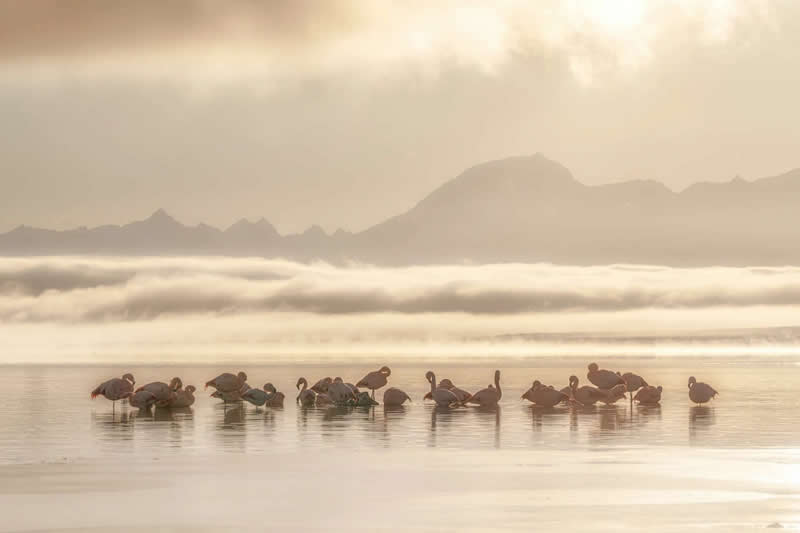
"Despite very few daytime hours, the sunlight in Patagonia is exquisite in winter. After arriving in Puerto Natales, my group walked along the waterfront as the sun began to set and spotted these backlit flamingos. I got my camera, and we walked carefully to the snow- and ice-covered shore. In subfreezing chill, I lay down on the cold ground to take photos. The warm sunlight, which enveloped everything, created a magical atmosphere."
#6. Birds Without Borders: "Royal Terns" by Jacobo Giraldo Trejos
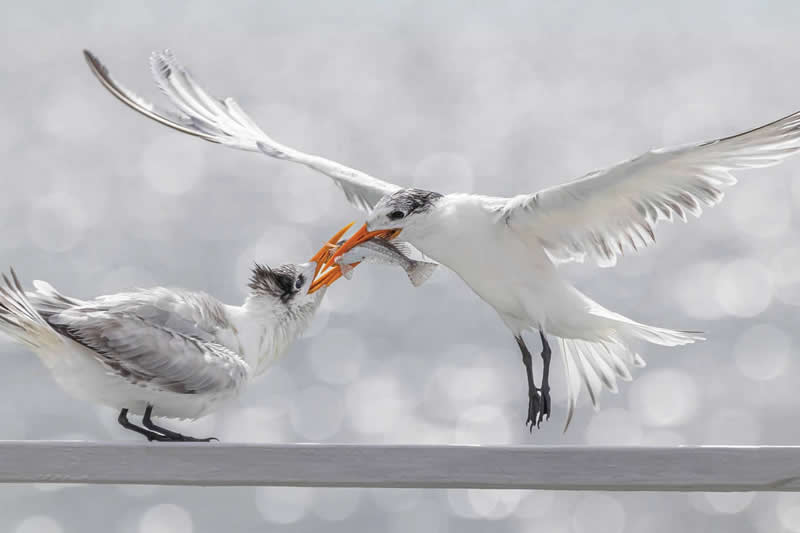
"Capturing this image required patience, attention to detail, and, above all, enduring the sun’s intense heat. The adult Royal Tern flew tirelessly, looking for fish to feed its young, which patiently waited on a railing. Many people think that dedication and affection for our young is exclusive to humans, but nature, as usual, proves us wrong. I feel a deep respect for these birds’ efforts: Photographing this moment was a privilege worth every second—and every drop of sweat."
#7. Birds Without Borders: "Snow Geese" by Yoshiki Nakamura
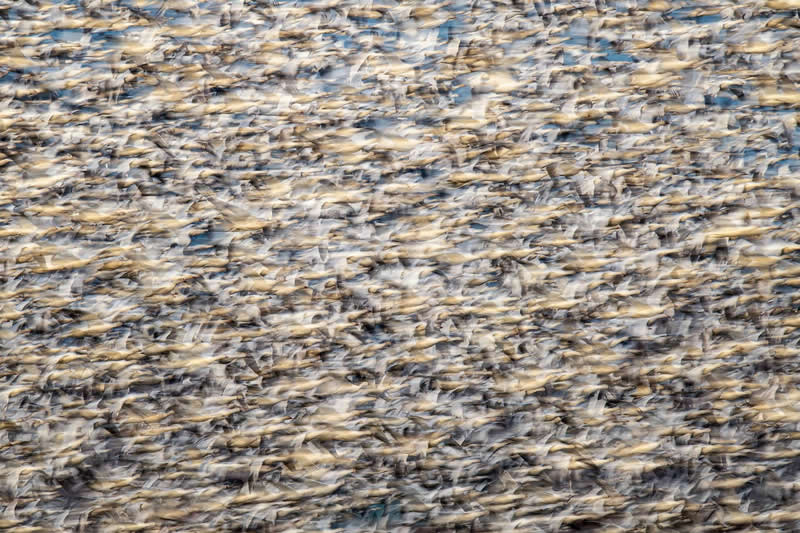
"Every winter, tens of thousands of Snow Geese migrate from Siberia to Washington’s Skagit Valley, where they stay from October to April. Massive flocks—some numbering more than 10,000 birds—take off together in breathtaking, synchronized motion. When danger nears, the first few birds flap their wings, sending a cascading signal that triggers a collective launch. Although they move as one, each bird follows its own rhythm and direction, creating a mesmerizing mixture of order and chaos. To express this ephemeral choreography, I used a slow shutter speed. The result is what I call a “melting flight”: a blend of motion, form, and instinct. What I find most beautiful is how this chaos has coherence. There are no collisions, no commands—just a shared sense of movement."
#8. Conservation: "Savanna Hawk" by Luis Alberto Peña
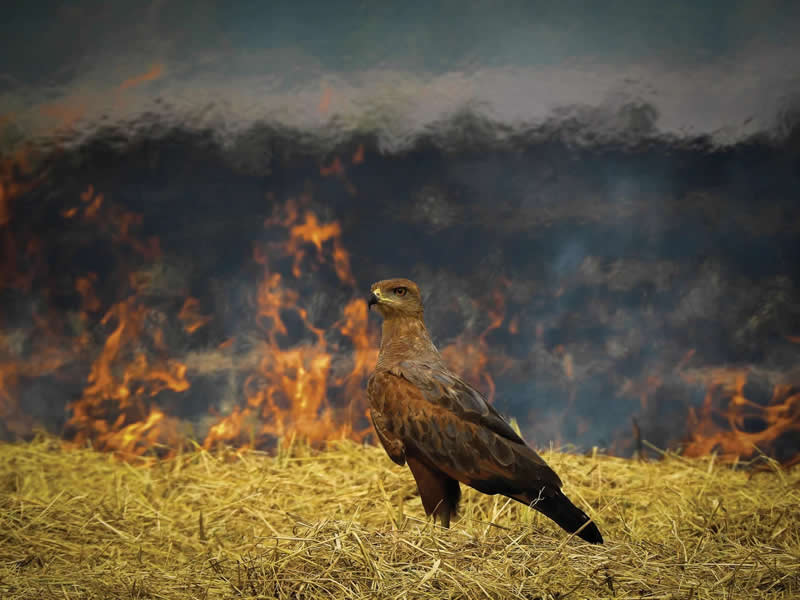
"I was photographing birds in a rural area when I came across this fire, which started as a controlled burn to clear rice crop residues but got out of hand. For many people who grow rice in this area, fires are a necessary practice for subsistence. However, these burns can also harm air quality and habitat, especially if they aren’t controlled. As I watched the flames, I noticed a Savanna Hawk. Attentive and patient, this bird never strayed from the dense smoke and heat; in fact, it returned again and again hoping to hunt disoriented animals fleeing the flames. I, on the other hand, eventually had to retreat. Before I left, I captured this visual testimony to one of the many ways that wildlife survives and adapts in the face of extreme environmental conditions."
#9. Conservation: "Burrowing Owl" by Jean Hall
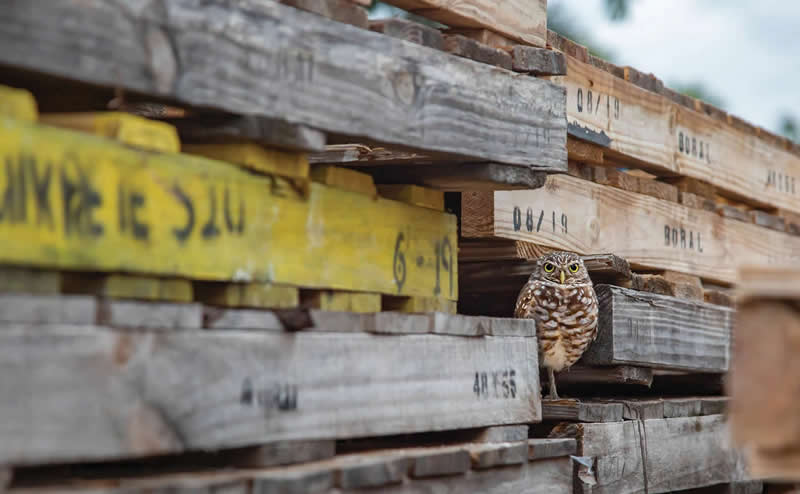
"As a volunteer with the Audubon of the Western Everglades’ Owl Watch program, I’ve spent hours and hours photographing Burrowing Owls. Initially, I was only interested in beauty and behavior shots. Over time, I realized I needed to take a journalistic approach to demonstrate the vulnerability of this imperiled species. I took this image near a construction site. This defiant guy decided to use a huge lumber pile as his roost for days. I returned several times because I never knew if or where he might pop out. Burrowing Owl habitat is almost gone, especially on Marco Island, but the birds’ toughness is hard to defeat."
#10. Plants for Birds: "Brandt’s Cormorant, sea grass, red grape algae" by Barbara Swanson
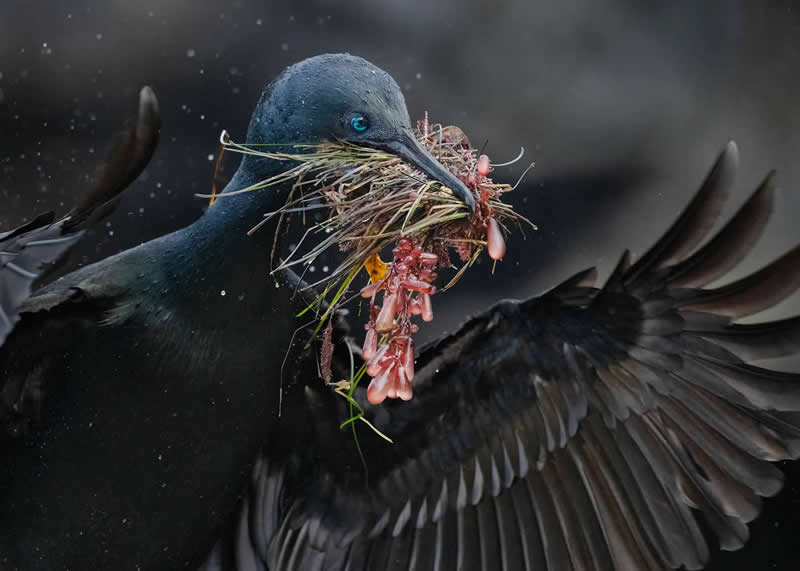
"I visited La Jolla’s cliffs three times in January, when cormorants were building nests, and with each visit my photos improved. The birds fly in low over the ocean, then swiftly gain altitude, making it hard to predict where each bird will settle. From the moment I spotted this bird flying in from some distance on my third visit, I had only six seconds to focus and snap this image as it prepared to land. I was in the right place, and my camera’s “bird focus” setting helped me keep the cormorant sharp in the frame. The bird carried not only the usual seagrass but also a strand of red grape algae, which glowed like translucent jewels."
#11. Plants for Birds, Colombia: "Purple-backed Thornbill, Gaiadendron punctatum" by Cristian Valencia
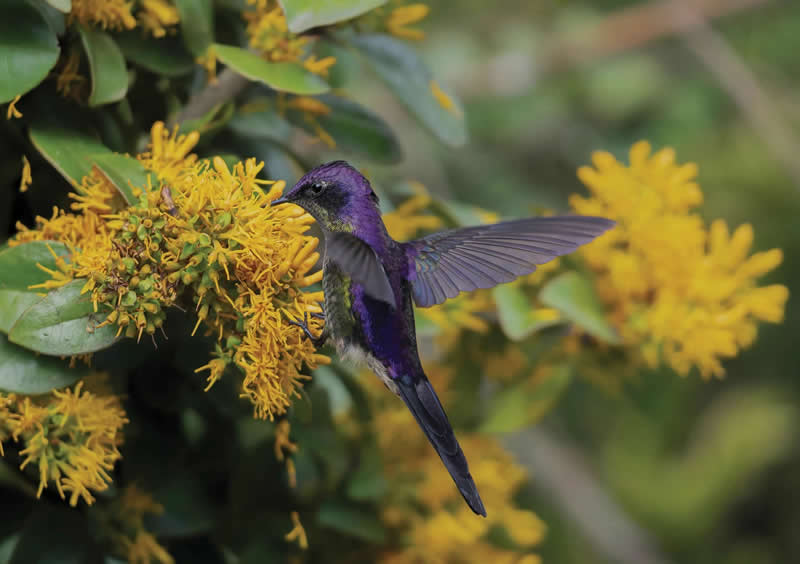
"I was blessed to work as a bird guide at the Hotel Termales del Ruiz, near Los Nevados National Natural Park. The area is home to a sub-páramo ecosystem, a cool forest rich in biodiversity. I wanted to photograph the Purple-backed Thornbill, so I approached flowers they pollinate. One day, I suddenly saw this specimen up close; I just had to wait patiently to capture its colorful beauty as it fed. I like to share such photos to raise awareness: When we cut down a forest, we also risk losing species like this one."
#12. Youth: "Blackburnian Warbler" by Camilo Sanabria Grajales
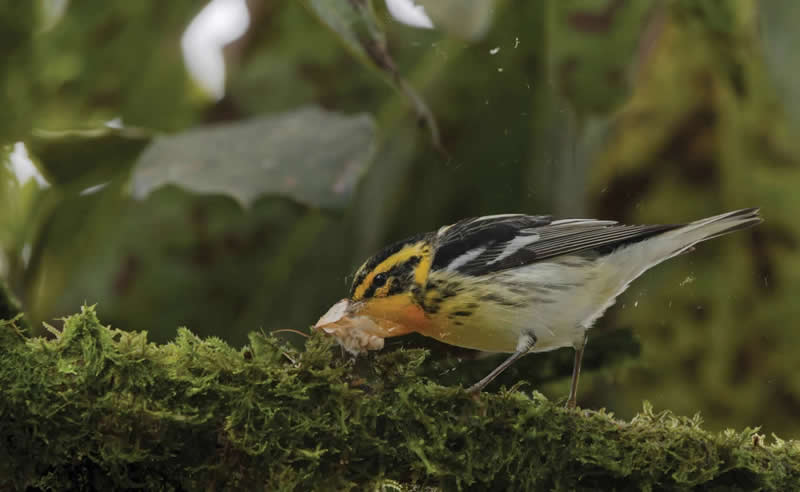
"On our way to this year’s Colombia Birdfair, my dad and I pulled over for lunch at the Neblinas restaurant. A little warbler crept up as I walked along the nature trail in the high-altitude cold. Suddenly, the bird caught a moth and shook it vigorously. Astonished as I was, I captured the precise instant of this predator-and-prey interaction in detail as the moth’s scales floated midair, released by each flick of the bird’s beak. To me, this photo reveals the vital relationship between migratory birds and ecosystems that support them."
#13. Youth: "Long-eared Owl" by Parham Pourahmad
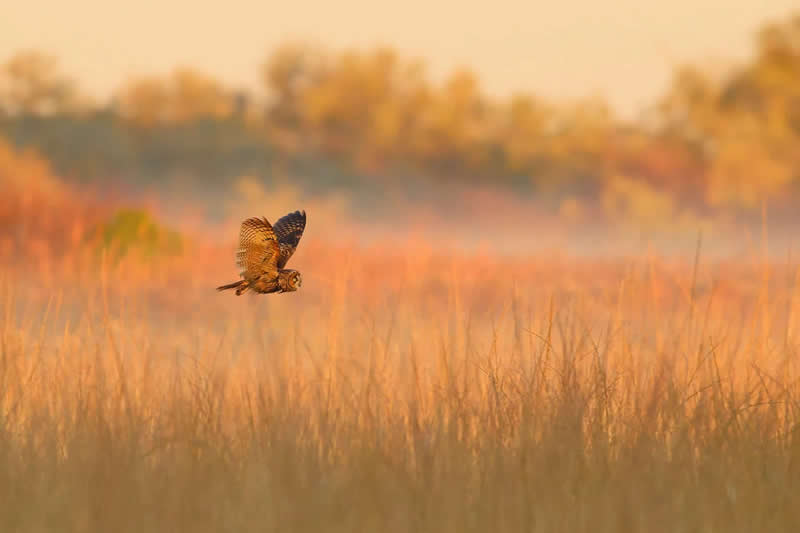
"When I heard of a rare Long-eared Owl sighting at Coyote Hills Regional Park, I went to check it out. When I arrived before sunrise, I saw the owl looking for rodents in the park’s grasslands and marshes. It hunted on and off for the next hour, giving me ample time to take photos. The sun rose, shining beautiful colors all over the marsh. When the owl flew by, I framed it with its habitat to demonstrate the connection between the owl and its home. I appreciated the warm lighting and how the owl stood out despite appearing small in the frame."
#14. Coastal Birds, Chile: "American Oystercatchers" by Francisco Castro Escobar
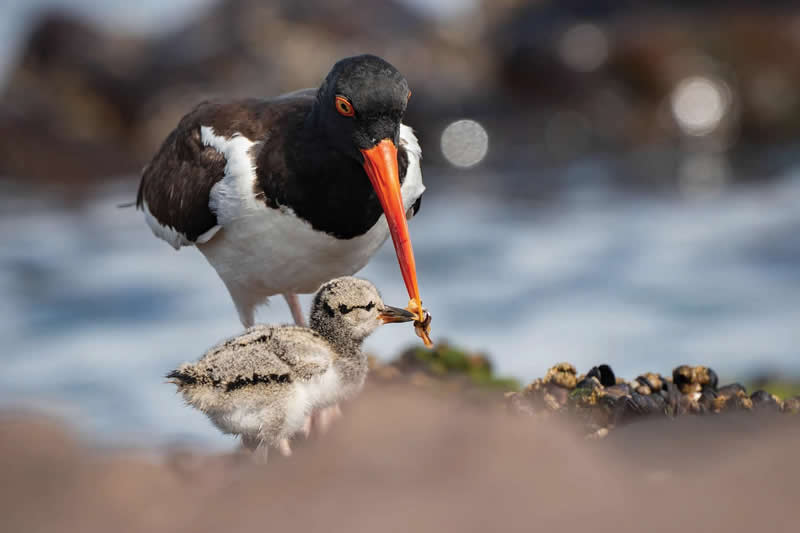
"I enjoy birding every weekend in the coastal area of my city. Urban sprawl has affected shorebird habitat, but even so, in summer it is common to see some species strolling among rocky outcrops or the shore. On this occasion, an American Oystercatcher chick and its mother came toward me. I hid, patiently waiting for them to get closer, until I was able to capture this beautiful moment of the mother feeding a mollusk to her chick. The tenderness of an image like this helps raise awareness about the importance of protecting these “coastal warriors,” as I call these birds, who struggle to survive day by day."
#15. Female Bird Prize: "Chipping Sparrow" by Sean Pursley
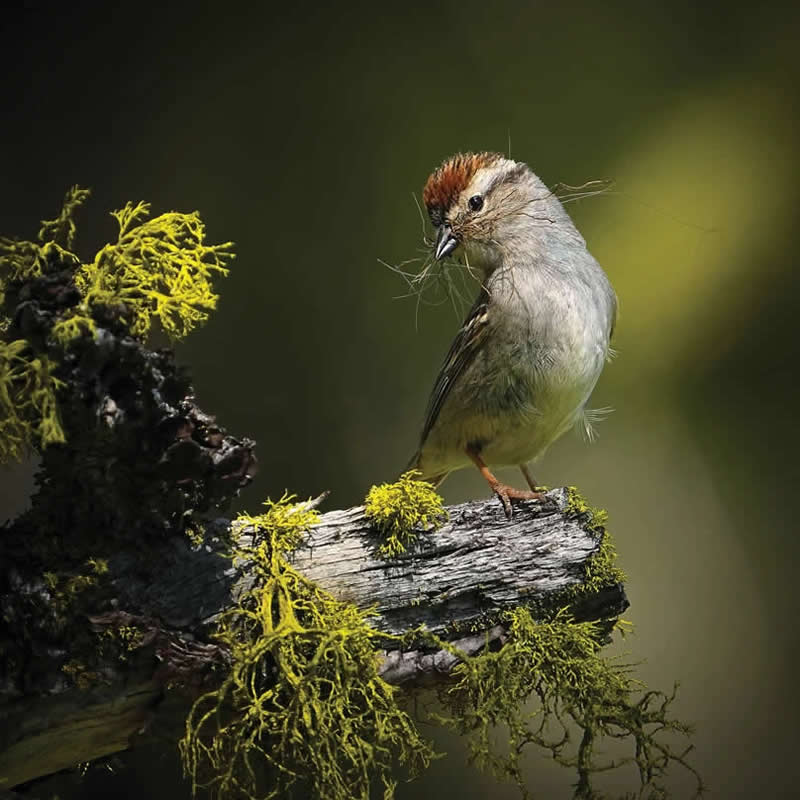
"I decided to head to cooler temperatures in the mountains, about an hour’s drive from Boise. I arrived as the early morning light started to hit the side of the mountain. I made my way on the trail as the filtered light shone through the canopy. It was absolutely magical: I could hear bird sounds all around, feel the cool air, and smell the pines. I then saw two Chipping Sparrows flitting around the bushes. One, carrying nesting material, flew onto a perfectly lit branch. She posed for about 15 seconds. The gifts the universe gives us are so special."

